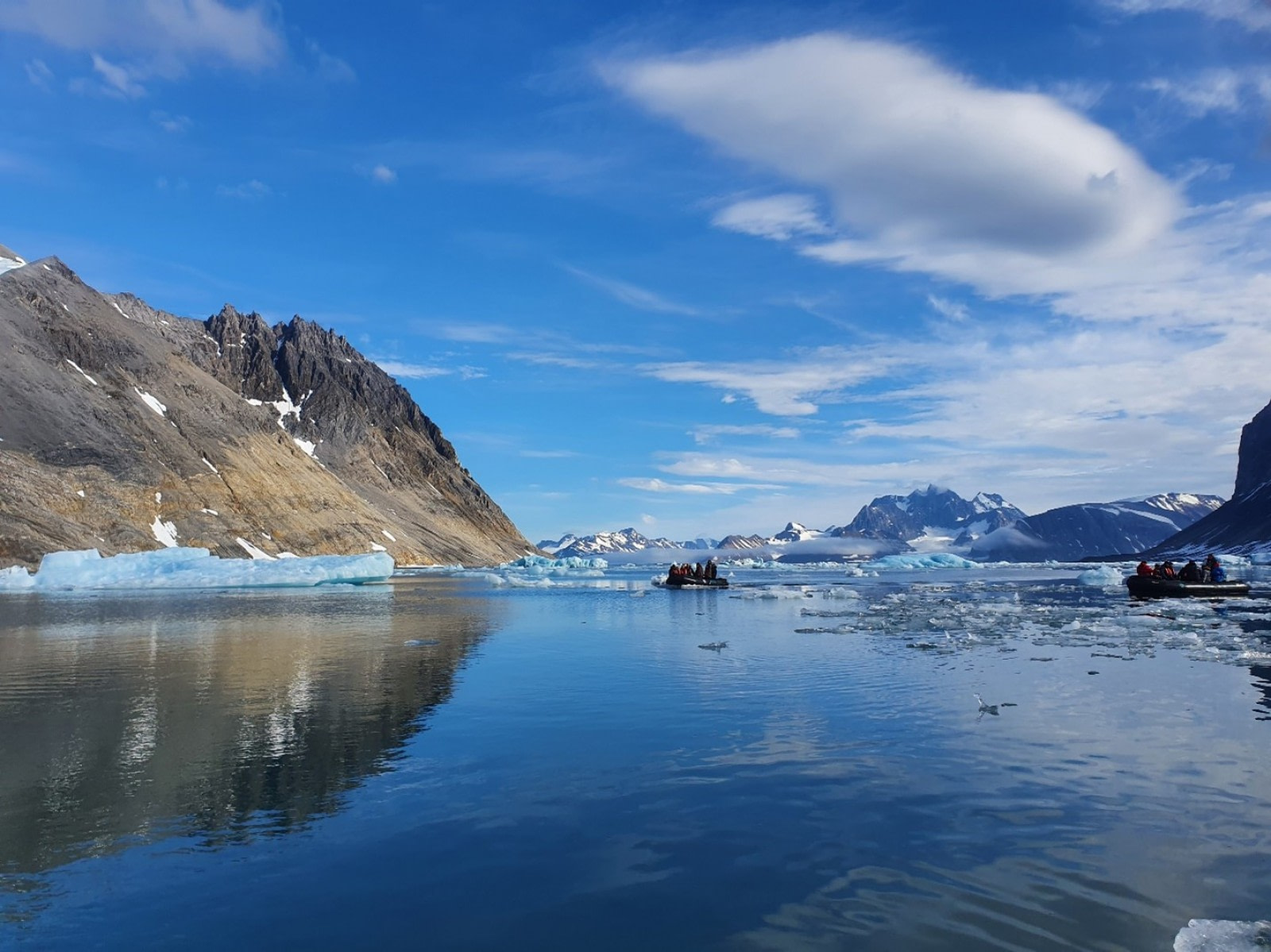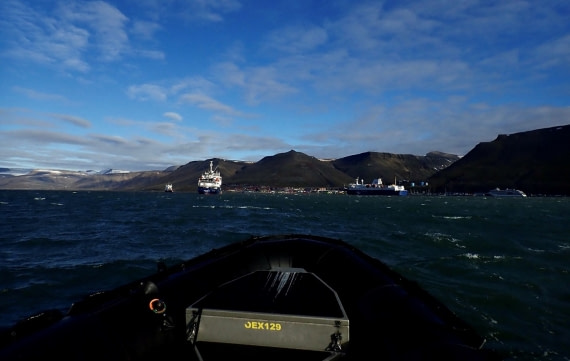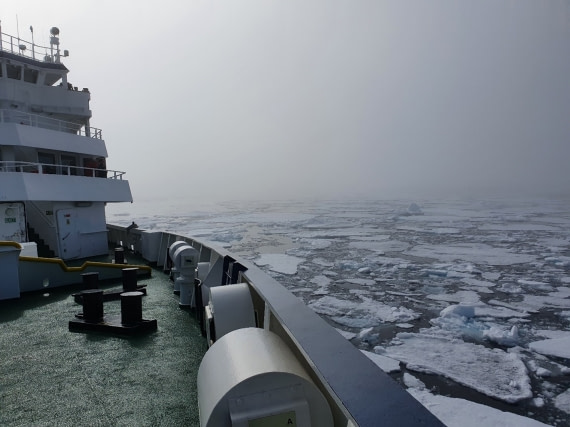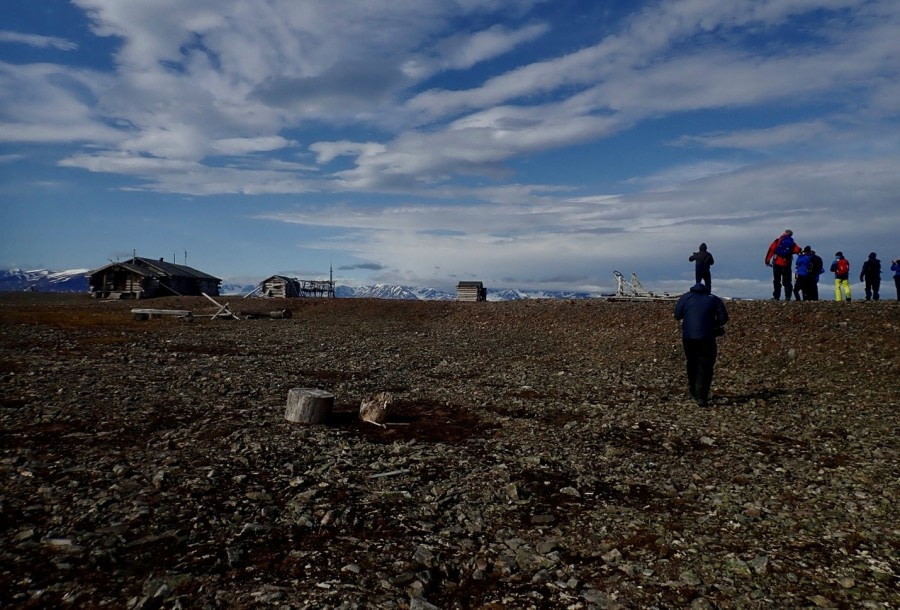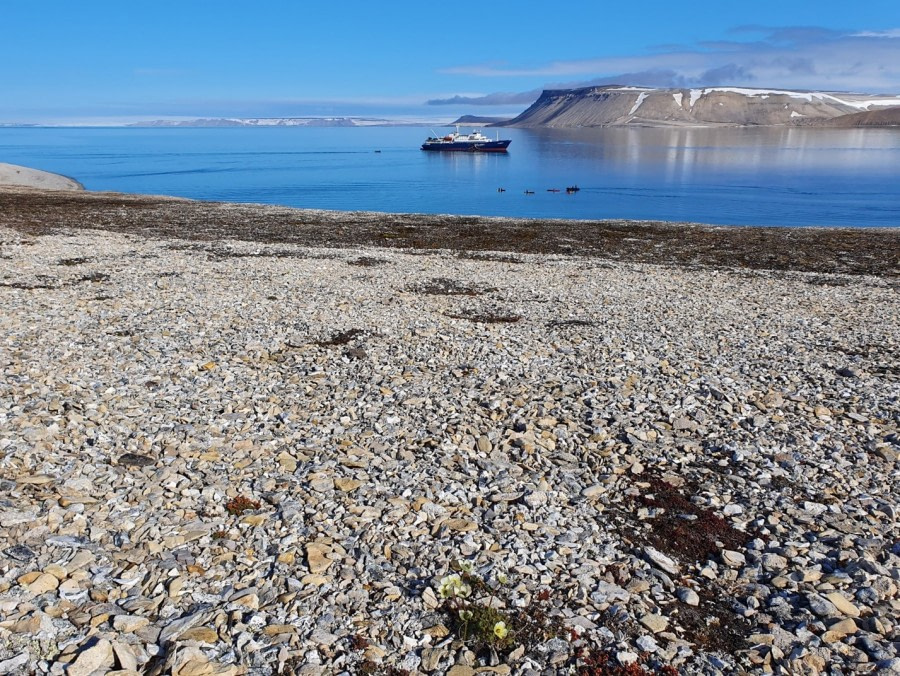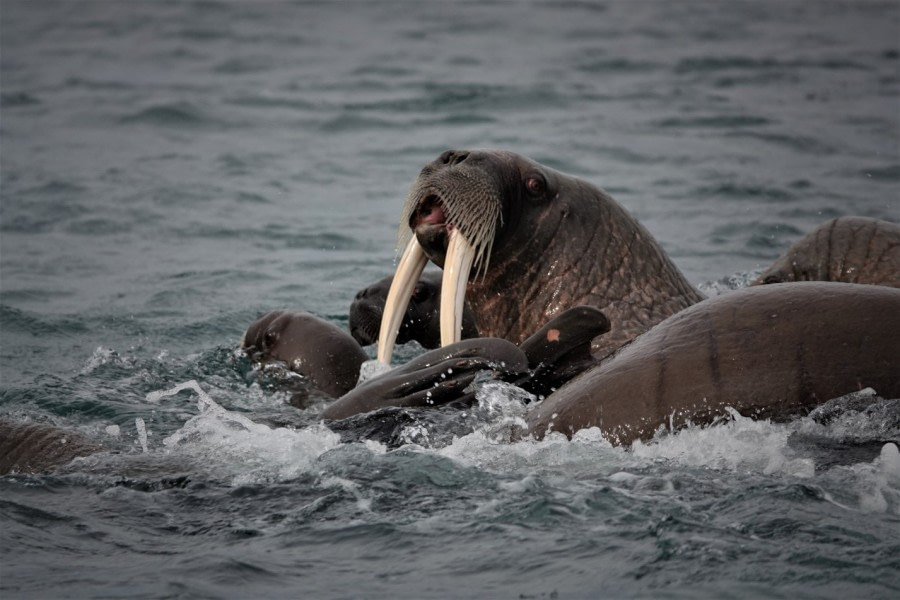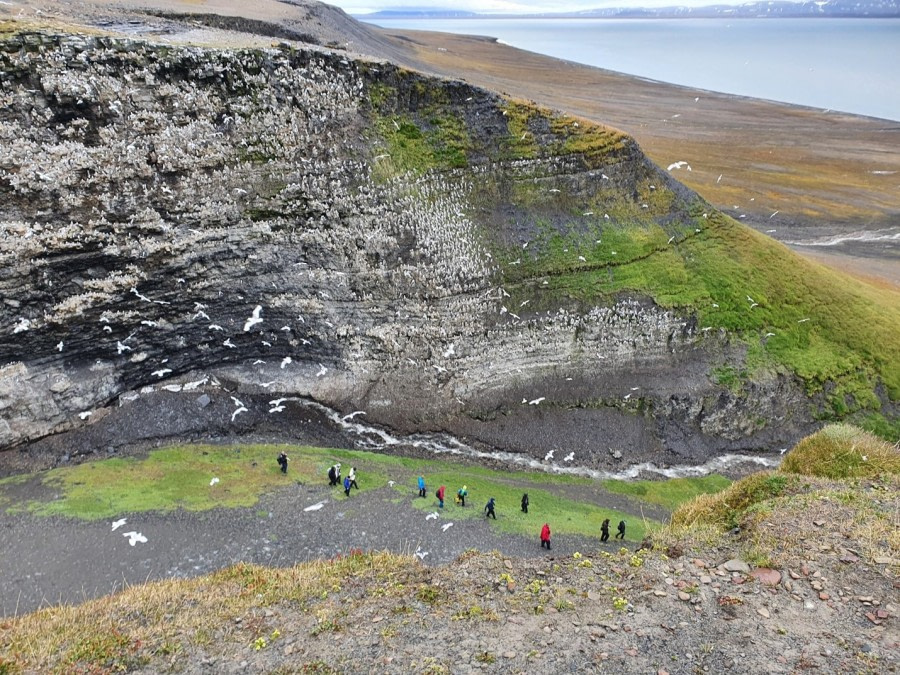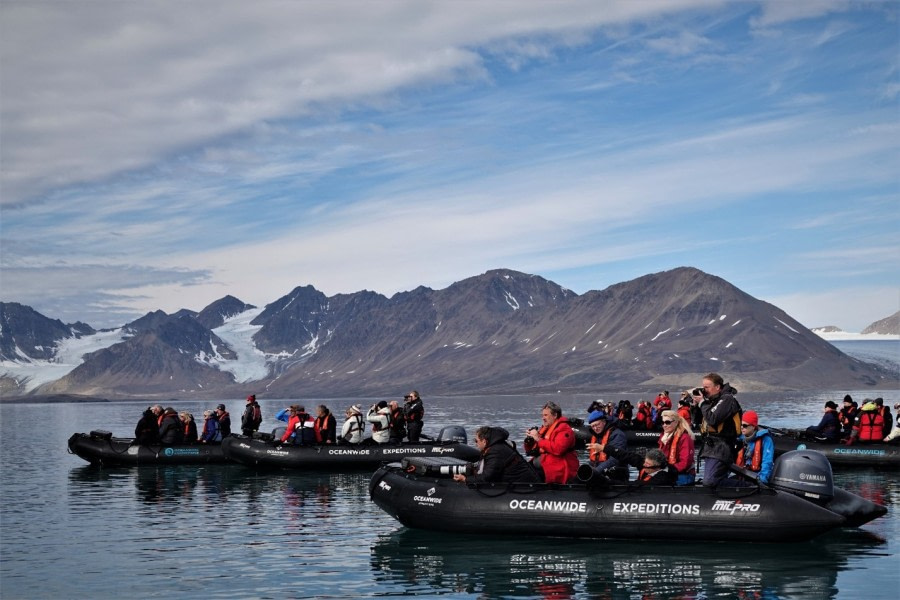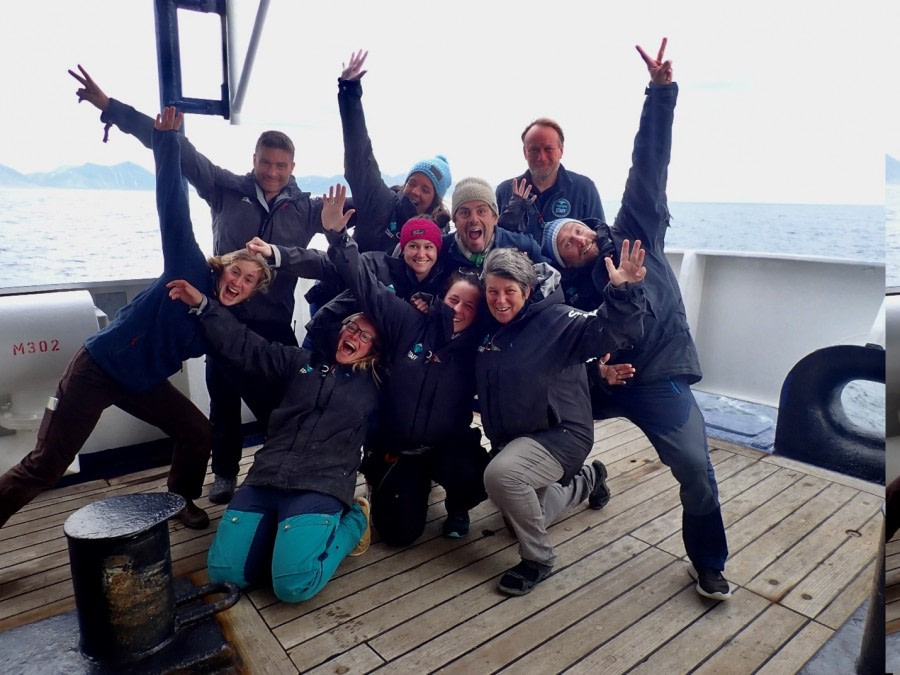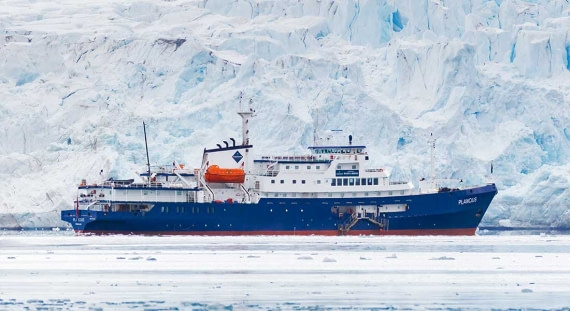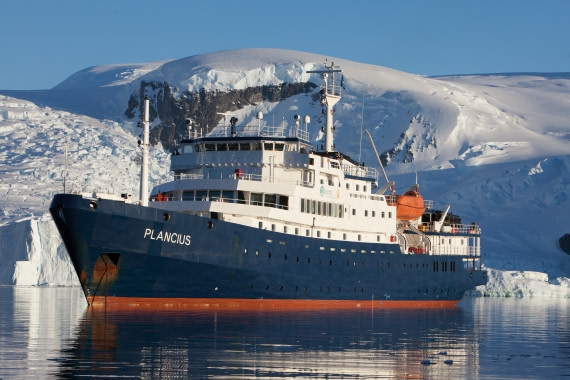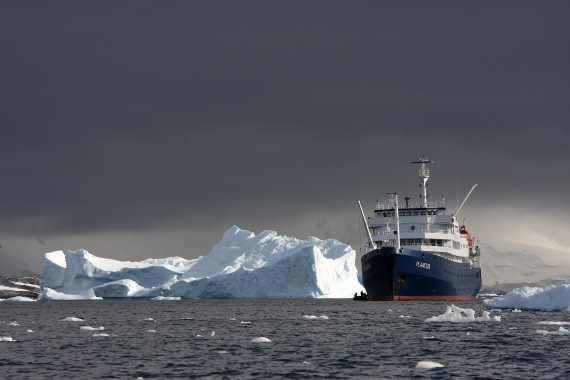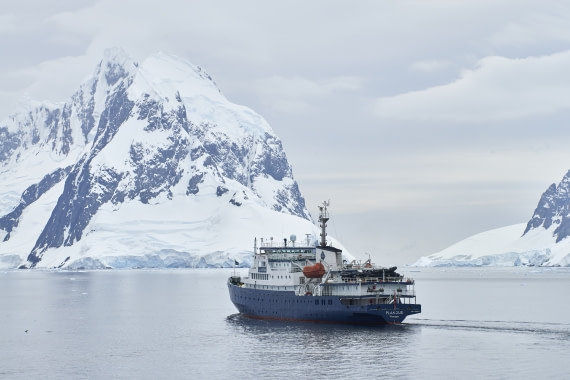| Datum: |
15.07.2022 |
| Positie: |
78°13,8' N 015°36,2'E |
| Wind: |
S-4/5 |
| Weer: |
Bewolkt |
| Luchttemperatuur: |
+10 |
Terug in Longyearbyen deed de bemanning fantastisch werk om het schip en de zodiacs op de juiste plaatsen en op de juiste tijdstippen te krijgen, zodat we allemaal met succes naar onze gewenste verdere reizen konden gaan. We hadden zeker geluk bij deze ontscheping omdat we langs de pier konden gaan.
Na een heerlijk laatste ontbijt aan boord met wentelteefjes en vers fruit was het tijd om afscheid te nemen.
Het is een triest moment om van boord te gaan van de Plancius, die een comfortabel en gezellig thuis is geweest tijdens deze onvergetelijke reis. We hebben vele unieke momenten gedeeld, een reeks zelden geziene wilde dieren gezien en nieuwe vrienden gemaakt. Beladen met mooie herinneringen moeten we nu op weg naar onze volgende reizen.
Kajaktocht Logboek Alexis Bellezze en David Horkan Kajakken rond Spitsbergen, een dag in het pakijs op zoek naar walvissen en honderden Zadelrobben om ons heen, de zoektocht naar Ijsberen in verschillende baaien, kliffen en dicht bij de gletsjers, peddelen in een middle of nowhere in stilte, met geen motor behalve je ziel en je armen, dat is wat we echte verkenning noemen. Een unieke kans om dichter bij alles om je heen te zijn.
Monacobreen We begonnen vroeg in de middag bij Monacobreen, een gletsjer die zich zo ver heeft teruggetrokken dat wat ooit één groot gletsjerfront was, nu door een berg in twee kleinere fronten is opgesplitst. Vanaf deze berg zagen we rotsen van de top van een steile berg tussen de gletsjers vallen. We zagen een kolonie drieteenmeeuwen bij de gletsjer.
Veel geluiden omringden ons, waaronder het gebrul van kalvingen in de verte. Af en toe zagen we een indrukwekkende ijsmassa uit elkaar vallen nadat het in zee was gestort, waarbij grommende ijsblokken werden verspreid die met de wind meedreven. Dit was een uitstekende start van het leerproces om de basis te leggen voor een drukke week in de archipel. Alkefjellet Daarna gingen we naar Alkefjellet, "Zeekoetberg", een grote en lange klif van basaltzuilen die dient als broedplaats voor 60.000 paren Brünnich's zeekoeten, drieteenmeeuwen, glaucusmeeuwen en Noordse Stormvogelen.
De sfeer was magnifiek en we maakten echt deel uit van het landschap met het geluid van de vogels, de trillende muren en de vogels die om ons heen zwommen en vlogen. We hadden het geluk om drie Poolvossen te zien, waarvan er een zich zelfs tegoed deed aan een gevallen vogel, en de anderen op zoek waren naar jachtmogelijkheden aan de voet van de rotspilaren. De ervaring was gewoon ongelooflijk en overweldigend.
Palanderbukta De dag erna hadden we een ontspannen ochtend bij Palanderbukta. We hadden de kans om onze peddeltechnieken te oefenen en te verbeteren, de baai was kalm, geen golven, geen wind en helemaal niet koud. In stilte konden we luisteren naar een walrus in de verte. Gelukkig was de walrus niet zo geïnteresseerd en verstoorde hij onze ochtend kajakken niet. Dit was een perfecte kajaktraining waardoor sommige kajakkers meer zelfvertrouwen kregen en ze waren erg blij. Torellneset Een andere dag onder meer uitdagende omstandigheden werd gevierd bij Torellneset.
Terwijl we aan het peddelen waren, kwamen verschillende Eideren en een rendier van het plateau naar ons toe. De veiligheidsbestuurder van de zodiac controleerde de nabijheid van vele Walrussen in het gebied van de gletsjer en besloot daarom het kajakken eerder dan gepland te beëindigen. Dit gaf ons de tijd om het gedrag van de dieren van een afstand te observeren in de zodiac op de terugweg naar het schip. Veel van de Walrussen toonden interesse in de bezoekers en keken ons nieuwsgierig na.
De laatste sessie vond plaats bij Burgerbukta, de perfecte plek voor een afscheid van de Noordpool! In een baai omringd door grillige bergen en prachtige wolken in de lucht.
Het landschap was dramatisch. Extreem mooie bergen en een oceaan bezaaid met ijs. Er heerste stilte onder ons terwijl we luisterden naar het krakende ijs en de rollende ijsbergen. Het was magisch. We peddelden met meer vrijheid, maar onder toezicht van de kajakgidsen en de zodiacbestuurder. We genoten van de ijsbergen en de rustige middag op een van de mooiste plekken van Spitsbergen. We wensen jullie allemaal nog meer avonturen op mooie plekken zoals deze en hopen dat we in de toekomst nog eens rond de Antarctische klank kunnen peddelen.
Het was ons een genoegen om deze passie en respect voor de natuur en wilde dieren met jullie te delen.
Heel erg bedankt en tot snel!!!
